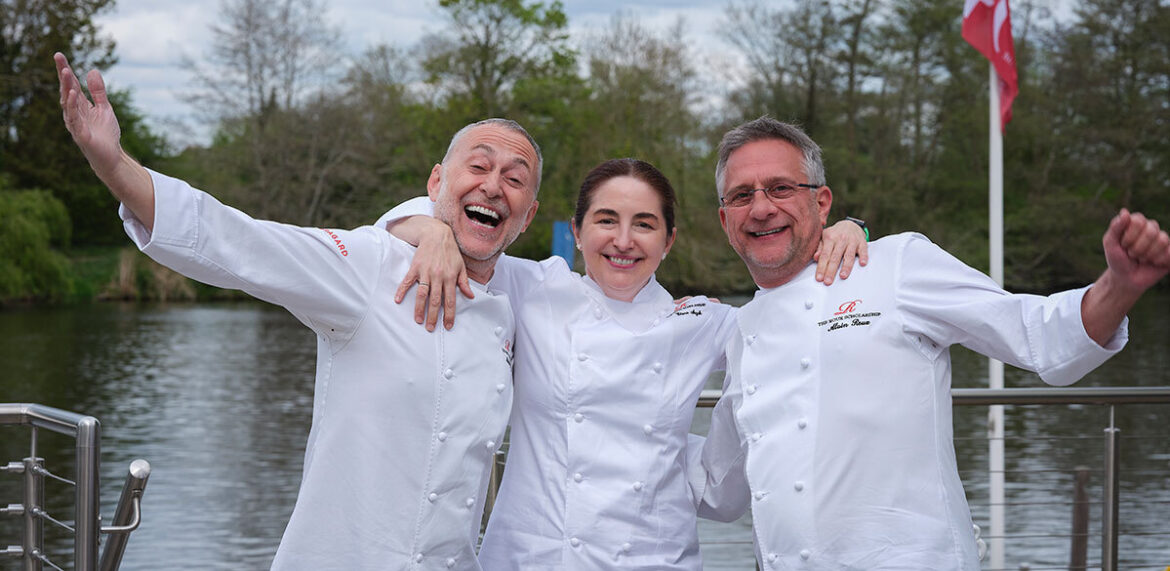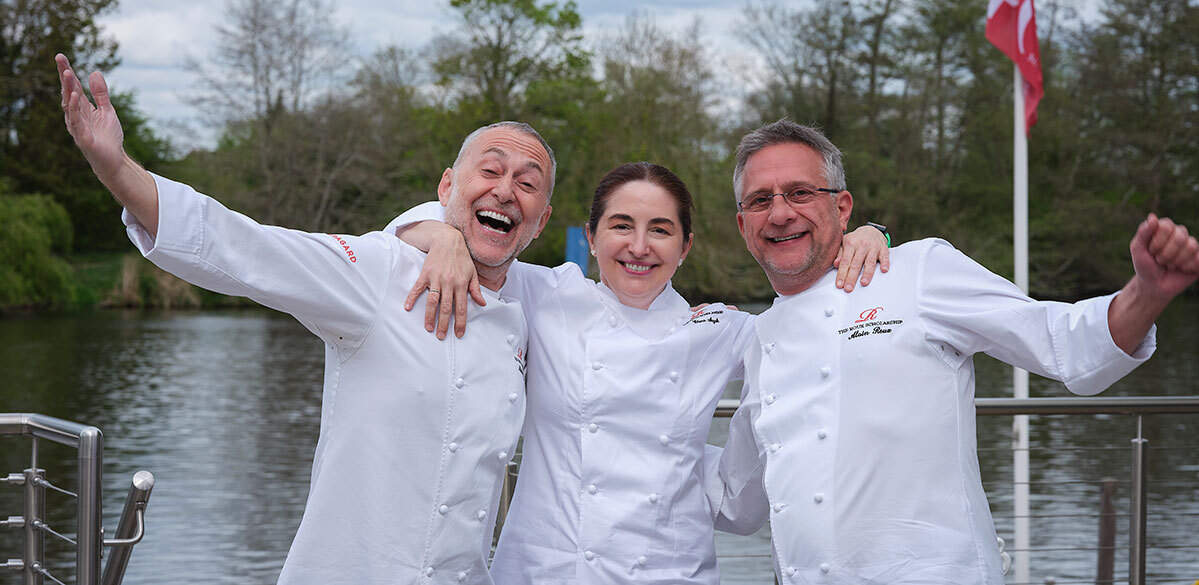
Michel and Alain Roux with guest judge Elena Arzak
The 2025 Roux Scholarship was truly a pressure cooker of an event, in all senses of the word. Jungmin Seo discovers what the judges were expecting when they set the brief for a dish that creates “mouthwatering happiness”
bookmark_borderSave to Library
A pressure cooker is an obvious metaphor for the conditions faced by the six Roux Scholarship finalists. The chefs were given just three hours and 45 minutes to produce a dish in response to this year’s unseen brief set by joint Roux Scholarship chairmen Michel and Alain Roux: to cook Wyndford wagyu shank with bone marrow, borlotti beans and Basque-style stuffed potatoes.
But not only that. Michel had ended the judges’ briefing to the finalists, held in the beautiful surroundings of the library named after his late uncle at the Alain Roux Culinary School in Bray, with an oddly specific reference: “Remember where our honorary judge [Elena Arzak] comes from. You will be given a pressure cooker if you wish to use one.”
The latter proved to be critical in determining success for the competitors, who were busy creating their dishes from the almost 100 ingredients on offer, featuring everything from five different types of potatoes to fresh wasabi. In fact, Craig Johnston, head chef at the Michelin-starred Angler in London, had coincidentally packed a spare pressure cooker. He was later crowned the 2025 Roux Scholar and dubbed a “clear winner” by judges.
“It was a subtle hint,” Michel says, having just come off stage at the presentation room in Coworth Park in Ascot, where he and his cousin Alain, chef patron at the three-Michelin-starred Waterside Inn, were rehearsing the awards ceremony. The morning frenzy of cooking, tasting and judging had ended, and guests including former Roux scholars April Lily Partridge, Spencer Metzger and Luke Selby had started arriving for the evening’s proceedings. “Four of the finalists used the pressure cooker and two of them didn’t. It would have been possible to cook the meat in the allotted time without the pressure cooker, but it would have been very, very difficult,” Michel adds.
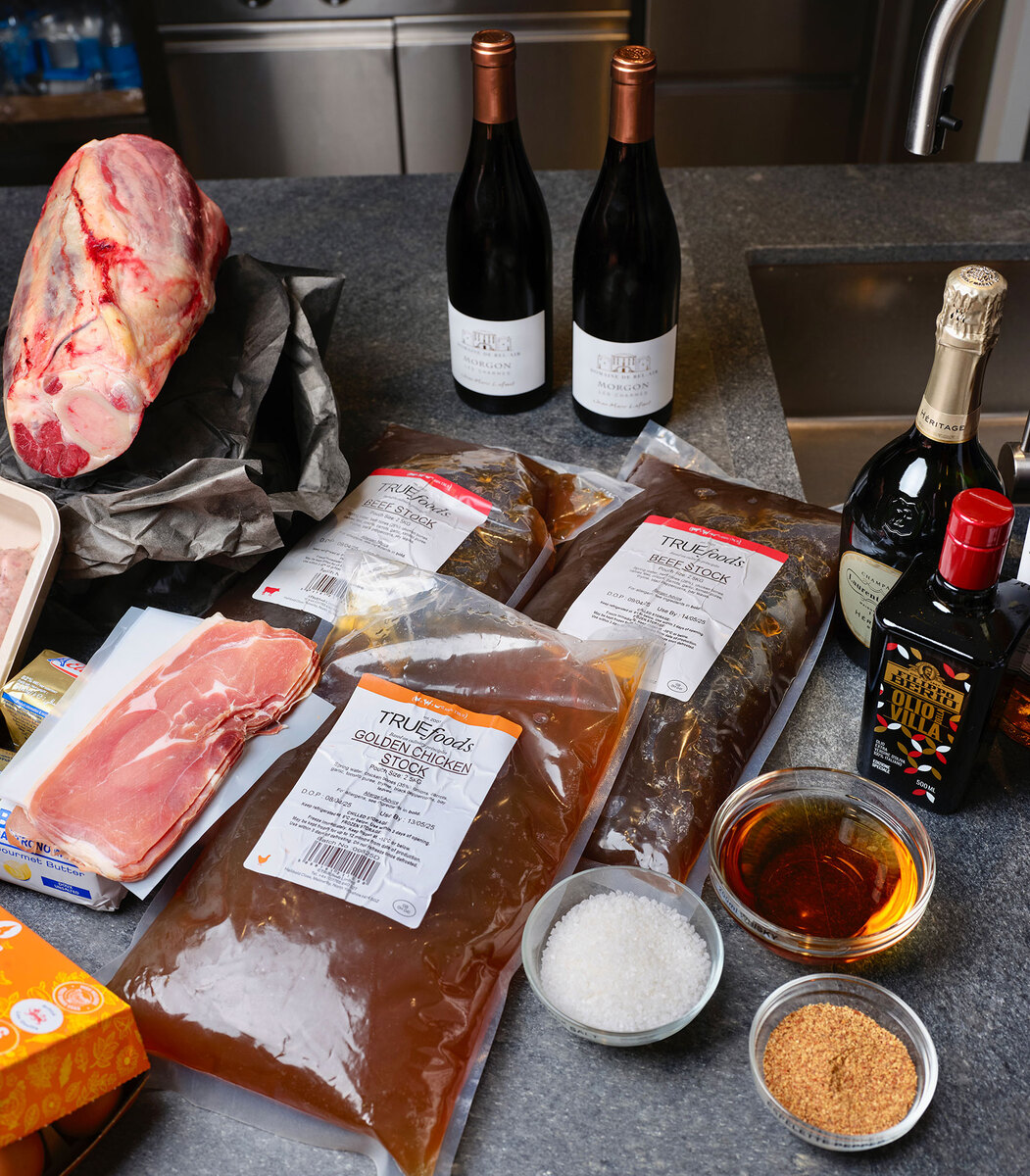
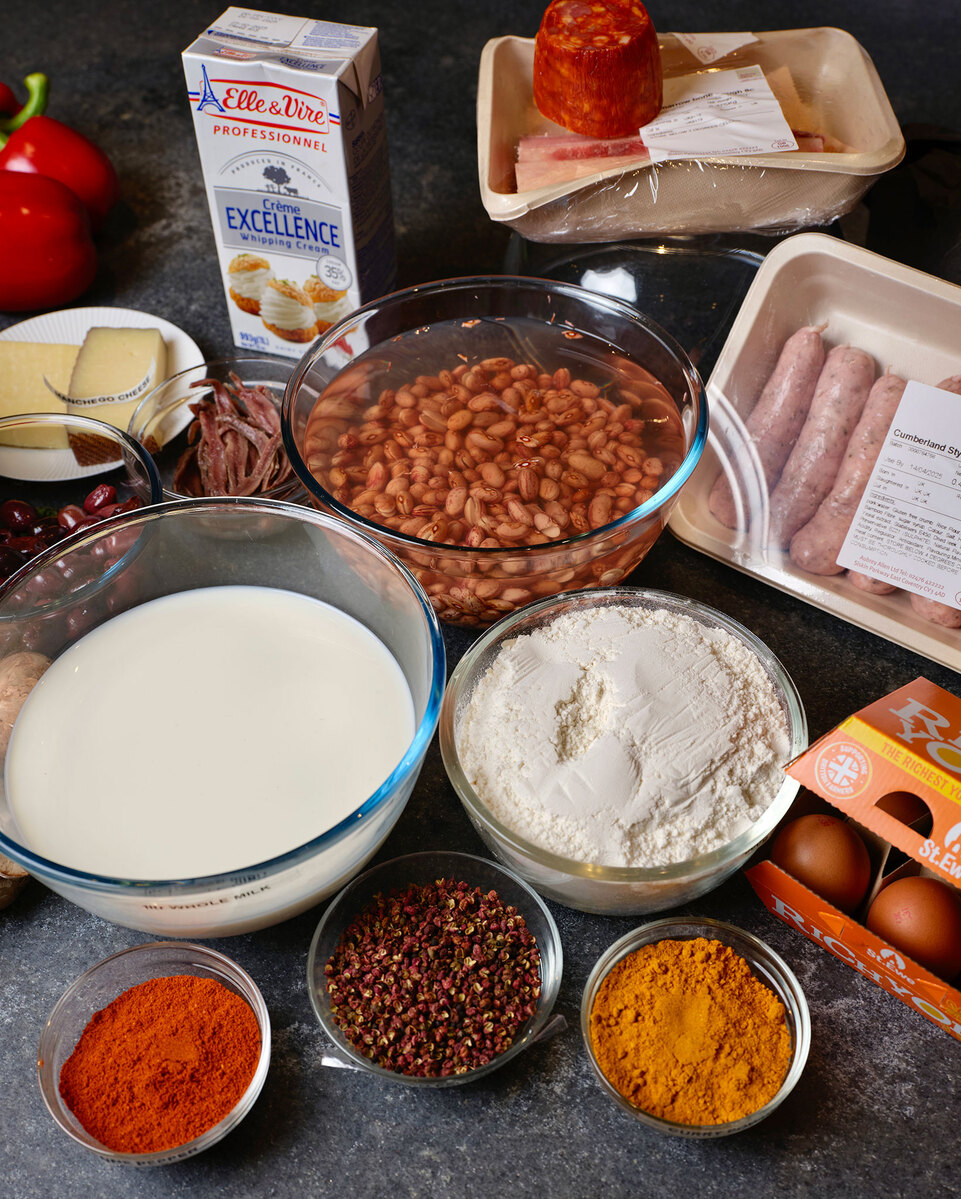
The choice of ingredients presented to the finalists
No bull
This year’s brief had appeared to have “flummoxed” some of the finalists – to use Michel’s words – because beef shin is not a cut often used, but he and Alain had decided on it precisely for this reason: “We talked about a dish that’s going to challenge them, rather than just giving them a fillet of beef, which is dead simple. That wouldn’t test them. This will.”
The chosen dish also required a Basque element in a nod to this year’s honorary president, Elena Arzak, joint head chef at Arzak in San Sebastián, which has held three Michelin stars since 1989 – coincidentally the same year she began training at Le Gavroche aged 19. She stayed at the restaurant for six years and remained in touch with the Roux family, which led to her being invited to guide this year’s 10-strong panel of judges, which included the likes of Emily Roux, Sat Bains, Brian Turner and Angela Hartnett.
“We want the Roux Scholarship to remain special, so it has to be a hard competition”
Michel and Alain launched the honorary president of judges role in 2016 to coincide with the beginning of their joint chairmanship. Over the past nine years, the culinary heritages of chefs such as Pierre Gagnaire and Thomas Keller have served as starting points for the national final. This also marked a move away from the laser-eye focus on classical French dishes, which was how the competition started back in 1983.
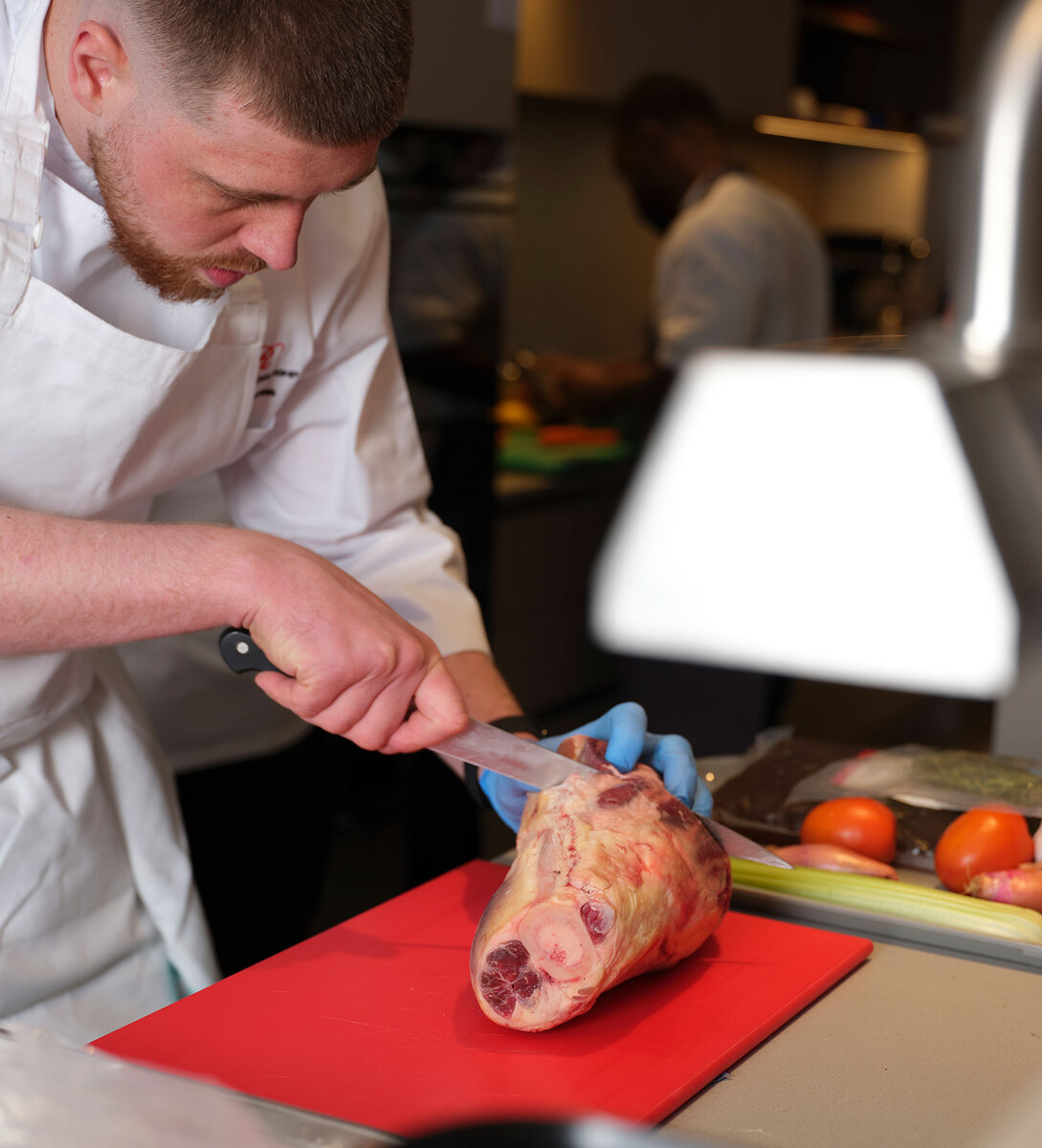
Liam Anderson
“It’s important the chefs can express themselves. Rather than giving them an imposed recipe, we are giving them imposed ingredients,” Michel explains. That said, creativity should not come at the cost of craft. “During the briefing, I reiterated they should try and focus on what they know and what they understand. Today is not the day to experiment – that’s key.”
Then how can chefs prepare? “You can’t prepare for [the unseen] because you don’t know if it’s going to be animal protein or fish. They have to trust their skills and instincts. We want the Roux Scholarship to remain special, so it has to be a hard competition. It has to be one that you merit and earn.”
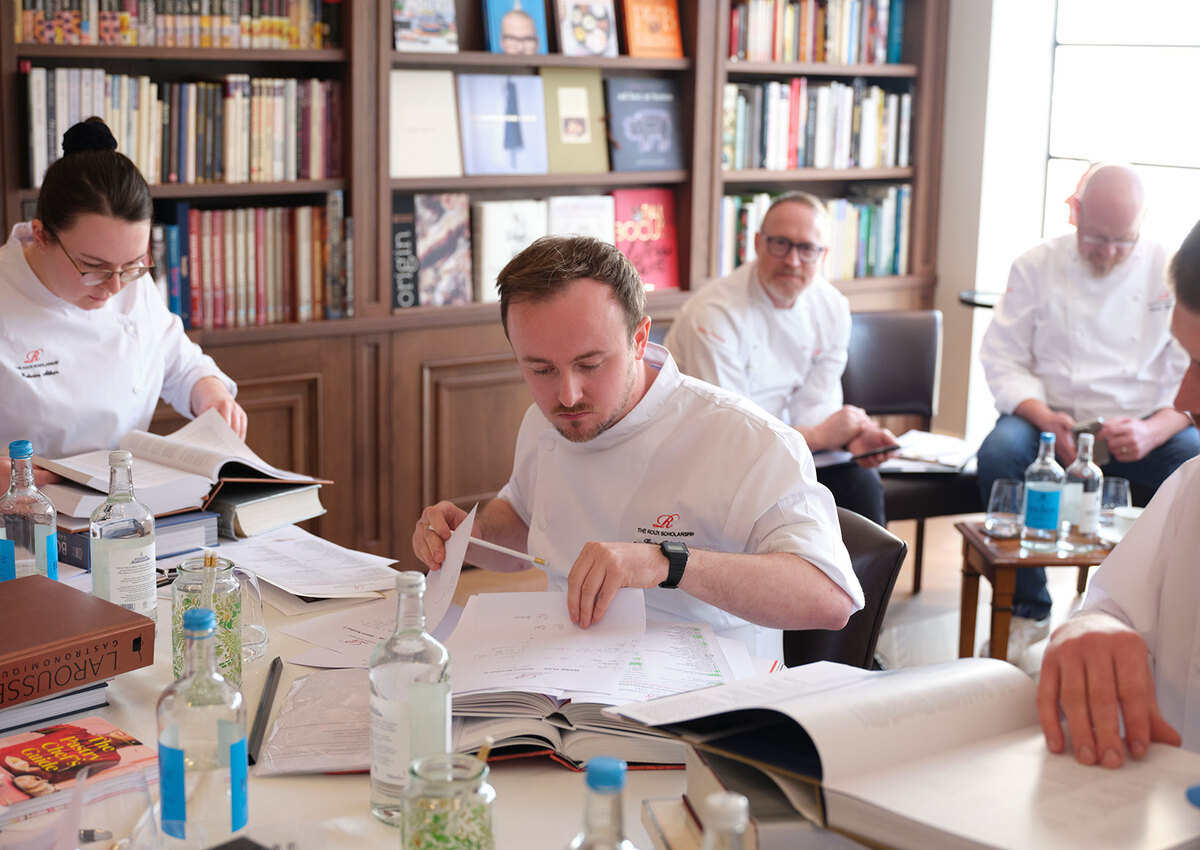
Johnston in the library at the Waterside Inn
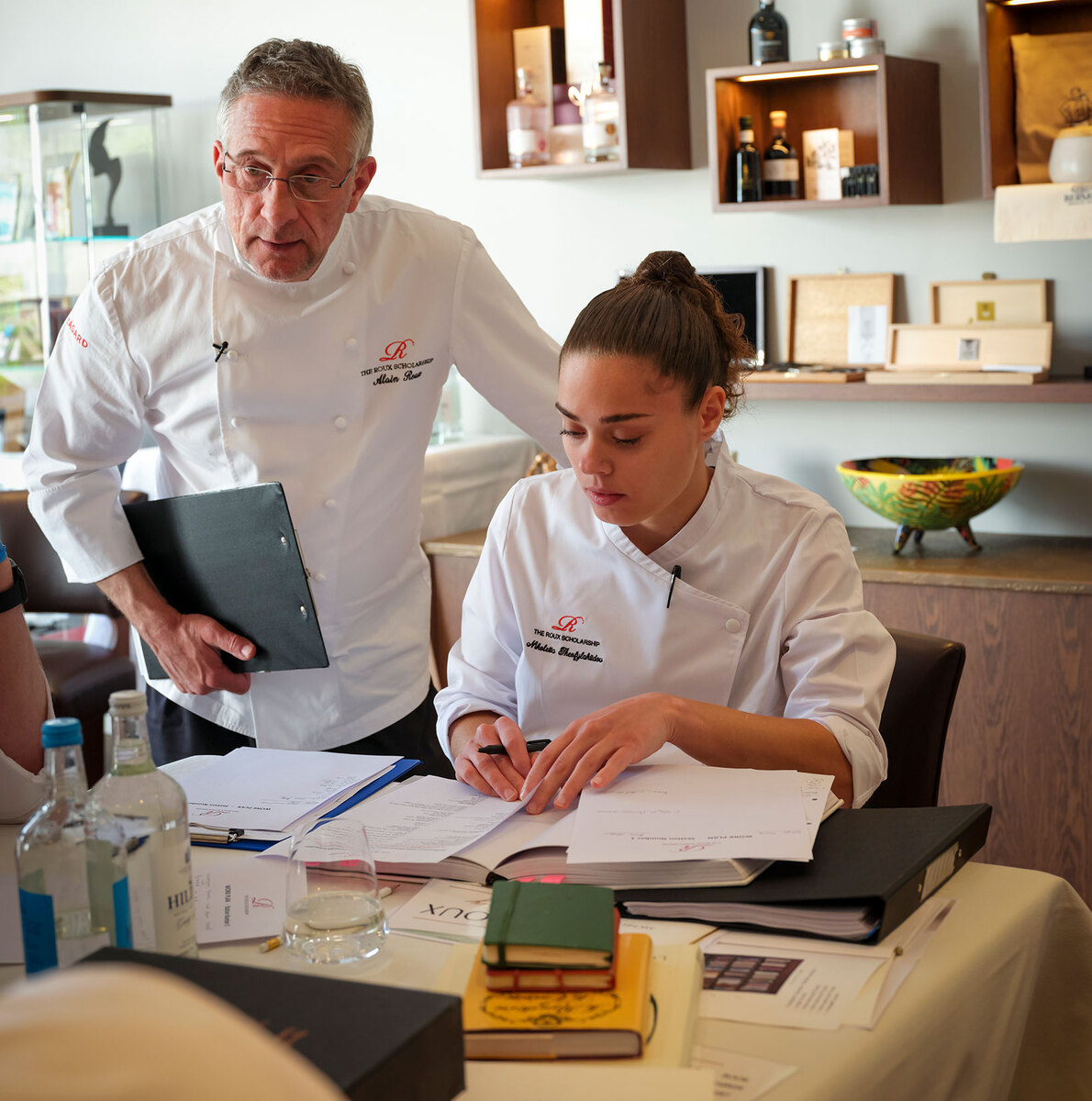
Nikoletta Theofylaktidou with Alain Roux during the briefing
Classic cuisine
The scholarship has historically struggled to attract women, but with April Lily Partridge taking the 2023 title nearly 30 years after its first female winner, Mercy Fenton, there have been signs of change. Half of this year’s finalists were female and all are believed to be first-time finalists – another rare feat for the culinary contest.
“It’s great!” Michel says. “We’re not purposefully making sure women get to the final, but the more women that enter it, the more likely it is that we are going to get women finalists. I think having three women out of six in the final might encourage more women next year again, so it could be a snowball effect.”
The 2025 Roux Scholarship was also the second year the finals were held at the newly renovated Alain Roux Culinary School, which has been created from the late Michel Roux Snr’s home. Finalists were given the chance to make use of the new kitchen stations while dipping into the chef’s collection of nearly 1,200 recipe books, which includes everything from Escoffier to pan-Asian restaurant chain Wagamama.
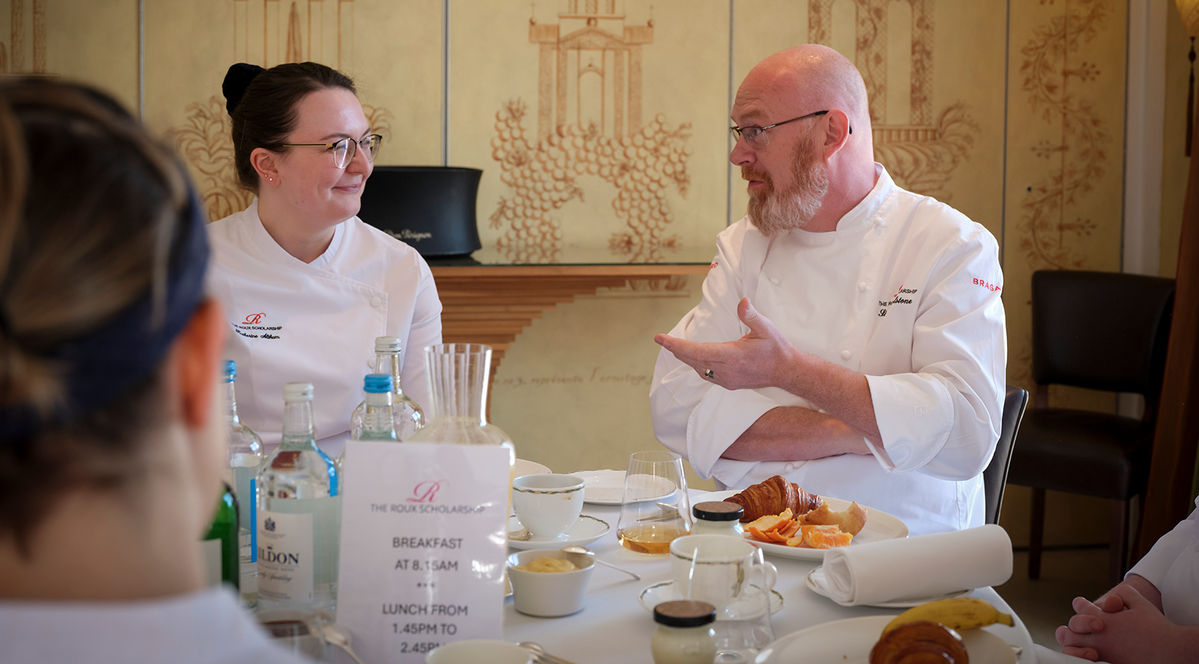
Katherine Altham with judge Simon Hulstone
Alain says: “I hear from chefs who are my age or even older as well as the young generation, and they still use my dad’s recipe books. A lot of people say his was their first cookery book. That is what is beautiful about something that is classic. My family is all about French style and French cooking. There’s always a bit of influence from other parts of the world, but the truth is that classic things, old things, will never fade away. I know that by experience.”
Perhaps that’s why the pressure cooker, which remains a staple technique in French cuisine, took centre stage in this year’s contest. In recent years, Alain noticed chefs were only using the traditional device, which was invented in 1679 by French physicist Denis Papin, to quickly cook stock, but not so much to cook vegetables and proteins. Johnston himself admits: “It’s not an everyday piece of kit.” The scholarship sought to change that a little, in the same way that chefs are asked to serve food on silver platters. “People are very much used to plating everything, so it’s just to give the possibility of chefs to learn,” Alain says.
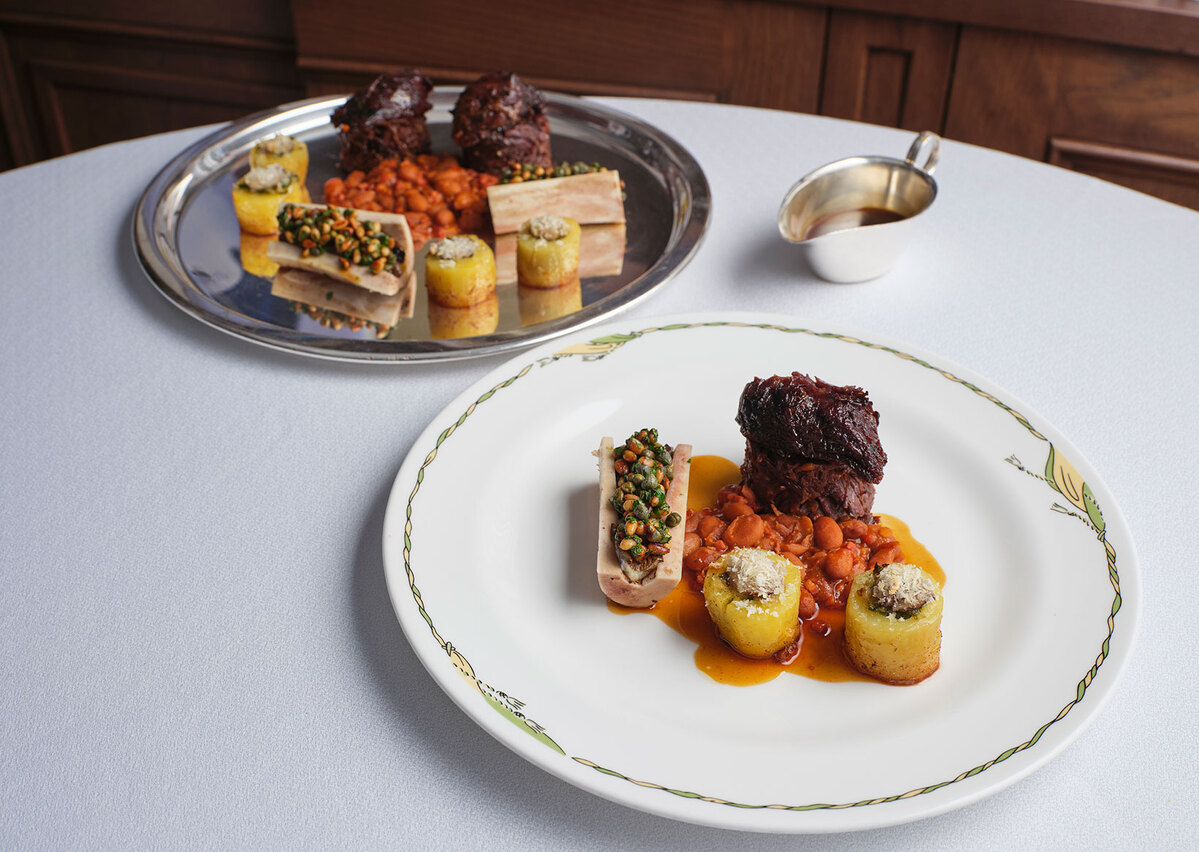
Erin Jackson’s final presented dishes
Born under a star
Arzak has had a similar experience in developing new recipes that also respect her family heritage, which has been under Michelin scrutiny for 50 years. “Because I am the fourth generation in my family of chefs I use items from the past as they have value. But, of course, our way of eating changes. For example, I can use a broth my grandmother and father made, but perhaps I use less salt, and the sauces I make are also not so strong,” she says.
How does she deal with the pressure of retaining three Michelin stars? “The first star was given in 1975, when I was five years old, so I grew up with Michelin and that pressure. Of course, for excellence, you need a little bit of pressure, otherwise you relax,” she explains. “When you love your profession and you look for excellence, you are used to the pressure. Pressure is necessary.” Her words could not have been more fitting.
But what would Michel himself have cooked is he was in the final? “I would love this dish because it’s something I really enjoy cooking and eating. I would break down the shin maybe into osso buco, so individual steaks with the bone marrow in the middle, because I think the presentation of that is really nice. Or would maybe trim the shin into two, tie it, colour it off, braise it in the pressure cooker, chill it down quickly and reshape it, and then, from the braising liquid, I would glaze little individual sized portions of the shin. It should be easy to cut, soft and tender, and full of flavour.
“We also asked for stuffed potatoes, and there are so many things you can stuff a potato with. And then the borlotti beans – maybe I could make a purée, a little ragu, a croquette. What we try to do is bring a little bit of the honorary judge to the final, so we added a few Basque ingredients and we asked for the potatoes to be in a Basque style, so just think about what they eat in the Basque region and what they are famous for.”

Johnston is crowned the winner
The brief from the judges
“Your main course dish must be served warm/hot. You have complete freedom to create, cook and serve your dish as you choose. It’s important to express your personality, flair and emotion through your cooking, choosing ingredients and methods freely to create a dish as ‘simple’, or as ‘sophisticated’, as desired.
“Your dish must be individual to you while reflecting an understanding of the culinary ethos of chef Elena Arzak and the distinctive flavours of her beloved Basque heritage. Taking chef Elena as your inspiration, your dish should seek to impress with taste above all, but creativity and innovation too. For example, through combinations, textures, perhaps reinterpretation of a classic. Above all, your dish must show respect for the purity, simplicity and delicate nature of chosen ingredients while exhibiting a careful balance of taste, texture and technique. Finally, the appearance and presentation of your dish should enhance our sensory and emotional enjoyment of it.
“You are requested to serve two portions on the round silver service platter provided and two portions on each of two plates also provided. To serve with three ‘simple’ or ‘composed’ garnishes/accompaniments. These must include ‘borlotti beans’ and ‘stuffed potatoes’. The third garnish/accompaniment is your own choice. To serve with some sauce(s) to complement your dish.
“Remember that your goal today is to serve a dish that will bring mouthwatering happiness to all the judges, but especially chef Elena Arzak, our honorary president.”
The Roux Scholarship finalists
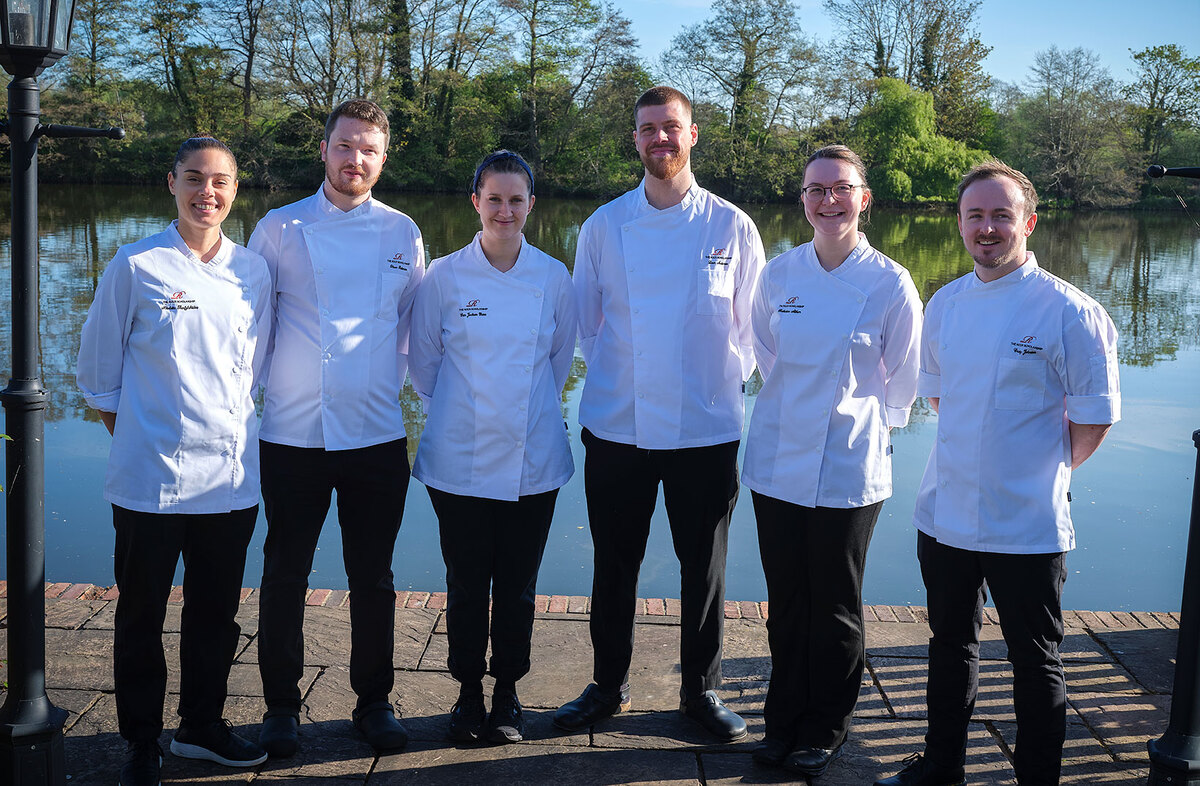
Pictured from left
Nikolette Theofylaktidou, fine dining sous chef, Restaurant Associates, London
Oliver Robinson, senior sous chef, Coworth Park, Ascot
Erin Jackson Yates, head chef, Bar Valette, London
Liam Anderson, head chef, Midsummer House, Cambridge
Katherine Altham, chef de partie, Hélène Darroze at the Connaught, London
Craig Johnston, head chef, Angler, South Place hotel, London
Read how Craig Johnston won the 2025 Roux Scholarship
Photography: Jodi Hinds

